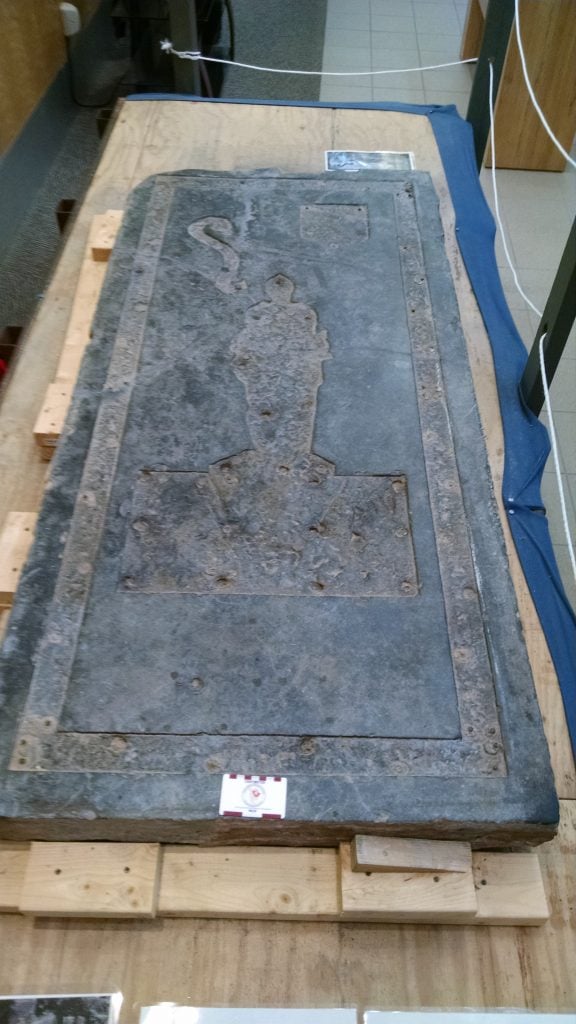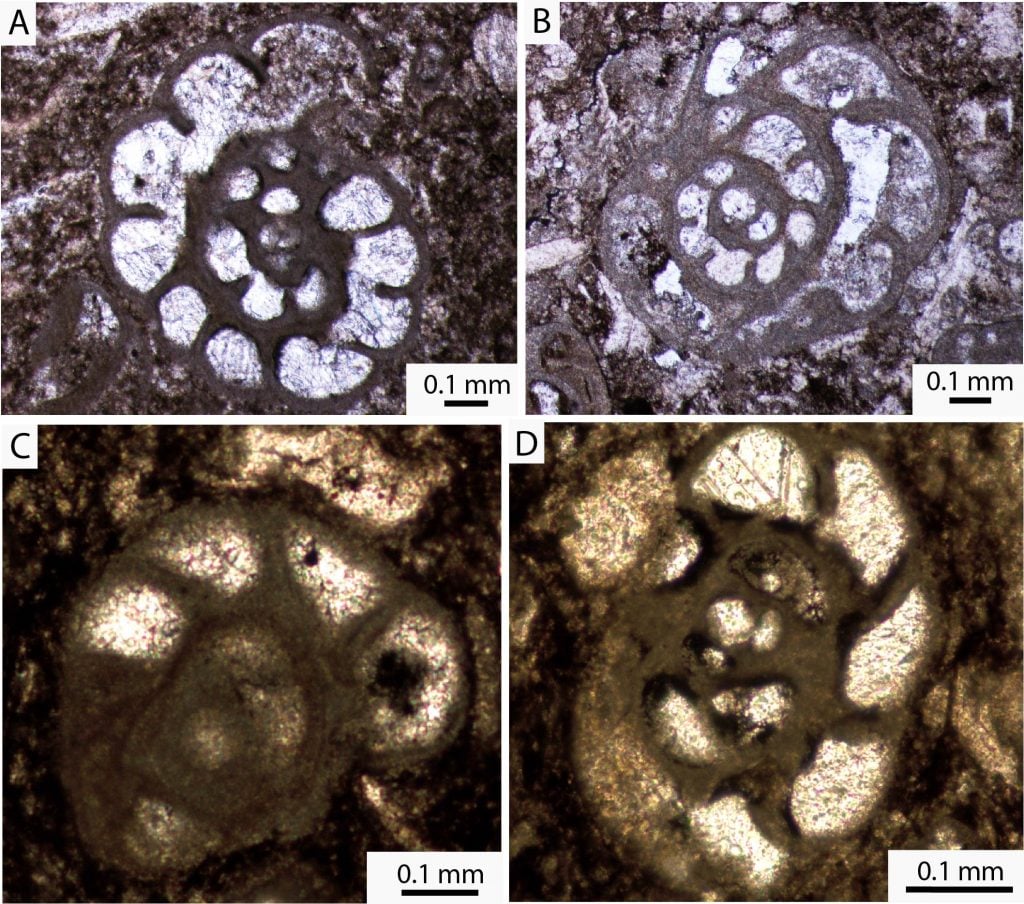Archaeology & History
New Research on America’s Oldest Tombstone Uncovers Its Surprising Origins
The Jamestown monument is believed to belong to colonist Sir George Yeardley.

The Jamestown monument is believed to belong to colonist Sir George Yeardley.

Verity Babbs

The oldest tombstone in America, known as the “Knight’s Tombstone” has undergone new analysis revealing more information about its origins and the life of its owner.
The tombstone shows a knight and a shield carved into its black limestone surface, which was once embellished with brass inlays. The intricate memorial was originally laid in the floor of the second church in Jamestown, but is currently in the city’s Memorial Church. Jamestown was the first permanent settlement of English immigrants in North America, established in 1607 by the London Company.
The monument was installed in 1627 and is believed to have been the oldest of its kind in the Chesapeake Bay region. It was moved in the 1640s and vanished from records until it was rediscovered in 1901, long after the second original church where it was originally installed had been subsumed by a third church.

The Knight’s Tombstone, Jamestown. Image courtesy of Marcus Key.
It was reinstalled in 1907 in Jamestown’s Memorial Church, which stands at the same location as all three historic places of worship. Until now, little else was known about the tombstone’s origins.
Research led by Marcus Key, the Joseph Priestly Professor of Natural Philosophy at Dickinson College, Pennsylvania, and Rebecca Rossi, a geologist with the California Geological Survey, was published on September 4 in the International Journal of Historical Archaeology. It aimed to “determine the source of the Jamestown’s black ‘marble’ knight’s tombstone.”
“Microfossils” examined from samples of the stone suggest that it was imported from Europe, and “historical evidence” more specifically pinpointed Belgium as the source, “from where it was transhipped in London and on to Jamestown.” Key first put this hypothesis forward in a 2021 paper, which also confirmed that the Knight’s Tombstone was the oldest surviving example in the U.S.A.
Microfossils examined by the team contain ancient single-cell organisms called foraminiferans, which are mostly found in Belgium and Ireland. The limestone itself has been dated to be between 340 and 336 million years old. The journey to import such a large (5.6 by 2.6 foot and almost 1,000 pound) object from Europe to America in the early 17th century would have taken around a year, and would have been prohibitively expensive.
This discovery, then, tells us not just about the material of the stone but the vast wealth of its owner, who was able to justify such a lavish import. According to Key, “the most expensive part of the stone is not the stone itself, but the transportation costs… there was somebody that was affluent enough to want to exhibit their wealth and memorialize themselves with such an expensive proposition.”

Micro-fossils found within the stone, examined by researchers. Image courtesy of Marcus Key.
The owner of the grand memorial is believed to be Sir George Yeardley, who arrived in Jamestown in 1610 following a 1608 shipwreck in the Bermuda island chain, and who was knighted by the English King James I in 1618. Yeardley led the General Assembly and was Lord Governor of Virginia. He oversaw America’s first witch trial and was one of the first American slave owners. Upcoming research into human remains found near the tombstone is hopeful to identity his body. He died at around 40 years of age.
Key was keen to point out that this tombstone isn’t representative of the wealth of the settlement at the time more generally, since “a lot of people there were probably dying with just wooden tombstones that were carved there on site [not inside the church, like Yeardley], and those obviously don’t survive for 400 years.”
Instead, the geoscientist said, “this is more of the history of our nation’s past and our colonial relationship with mother England.” Around 400,000 English immigrants arrived on the East coast of North America during the 17th century.
The paper concluded that “successful Virginia colonists who had lived in London would have been familiar with the latest English fashions and tried to replicate these in the colonies. For colonists like Yeardley, a black marble ledger stone not only commemorated his accomplishments and virtues but boldly proclaimed his family’s elite position in colonial life.”